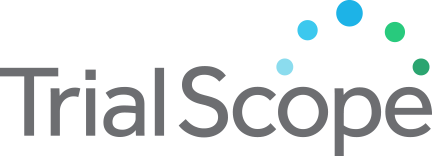Fibulink Syndesmosis Repair System With Early Full-Weight Bearing
Study Purpose
The purpose of the study is to evaluate the ability of the Fibulink Syndesmosis Repair System to maintain reduction of the ankle syndesmosis. Appropriate reduction of the syndesmosis is critical due the changes in tibiotalar contact pressure observed in cadaveric studies.6,7 Malreduction and instability of the distal tibiotalar joint can lead to chronic instability, increased articular damage and ultimately degenerative arthritis.7,8 Medial to lateral translation of distal tibia and fibula of 2 mm or more has been considered pathologic.9 Earlier biomechanical study demonstrated the Fibulink system is superior in maintaining displacement of less than 2 mm.4 Given the improved strength, we also look to evaluate the outcomes of initiating full weight bearing (100%) with Controlled Ankle Motion (CAM) boot at 4 weeks postoperatively. One of the big limitations for trans-osseous screw fixation is delayed weight bearing due to risk of screw breakage.1 Suture button technique allowed for early weight bearing with average of 6 weeks postoperatively using TightRope.2,10-12By initiating full weight bearing (100%) with CAM boot at 4 weeks postoperatively, this would be a significant improvement in current clinical practice.
Recruitment Criteria
|
Accepts Healthy Volunteers
Healthy volunteers are participants who do not have a disease or condition, or related conditions or symptoms |
Yes |
|
Study Type
An interventional clinical study is where participants are assigned to receive one or more interventions (or no intervention) so that researchers can evaluate the effects of the interventions on biomedical or health-related outcomes. An observational clinical study is where participants identified as belonging to study groups are assessed for biomedical or health outcomes. Searching Both is inclusive of interventional and observational studies. |
Interventional |
| Eligible Ages | 22 Years and Over |
| Gender | All |
Trial Details
|
Trial ID:
This trial id was obtained from ClinicalTrials.gov, a service of the U.S. National Institutes of Health, providing information on publicly and privately supported clinical studies of human participants with locations in all 50 States and in 196 countries. |
NCT06085586 |
|
Phase
Phase 1: Studies that emphasize safety and how the drug is metabolized and excreted in humans. Phase 2: Studies that gather preliminary data on effectiveness (whether the drug works in people who have a certain disease or condition) and additional safety data. Phase 3: Studies that gather more information about safety and effectiveness by studying different populations and different dosages and by using the drug in combination with other drugs. Phase 4: Studies occurring after FDA has approved a drug for marketing, efficacy, or optimal use. |
N/A |
|
Lead Sponsor
The sponsor is the organization or person who oversees the clinical study and is responsible for analyzing the study data. |
Maimonides Medical Center |
|
Principal Investigator
The person who is responsible for the scientific and technical direction of the entire clinical study. |
Amr A Abdelgawad, MD PhD MBA |
| Principal Investigator Affiliation | Vice Chair of Orthopedic Clinical Programs, Director of Pediatric Orthopedic Surgery |
|
Agency Class
Category of organization(s) involved as sponsor (and collaborator) supporting the trial. |
Other, Industry |
| Overall Status | Recruiting |
| Countries | United States |
|
Conditions
The disease, disorder, syndrome, illness, or injury that is being studied. |
Ankle Fractures, Bimalleolar Fractures, Syndesmotic Injuries, Bimalleolar Equivalent Fracture, Maisonneuve Fracture, Trimalleolar Fractures, Ankle Dislocation |
Contact a Trial Team
If you are interested in learning more about this trial, find the trial site nearest to your location and contact the site coordinator via email or phone. We also strongly recommend that you consult with your healthcare provider about the trials that may interest you and refer to our terms of service below.
